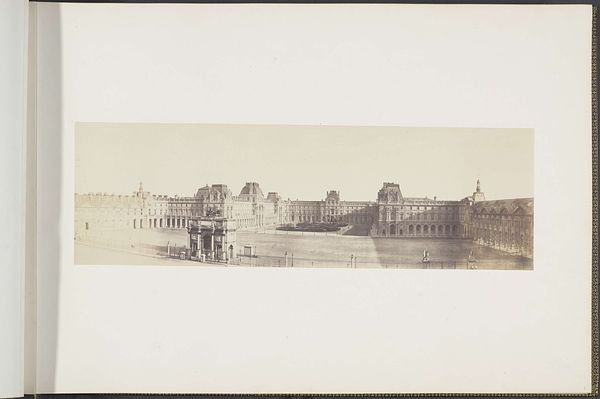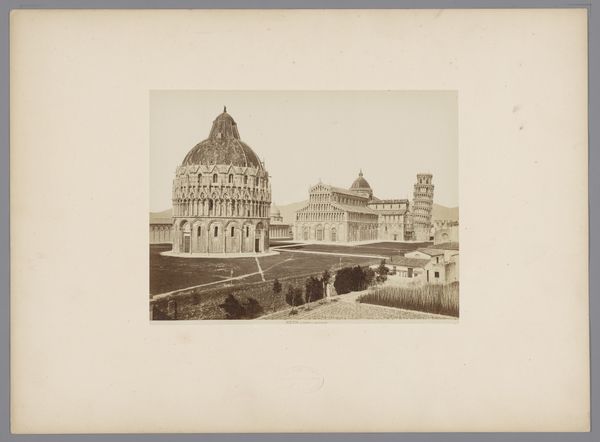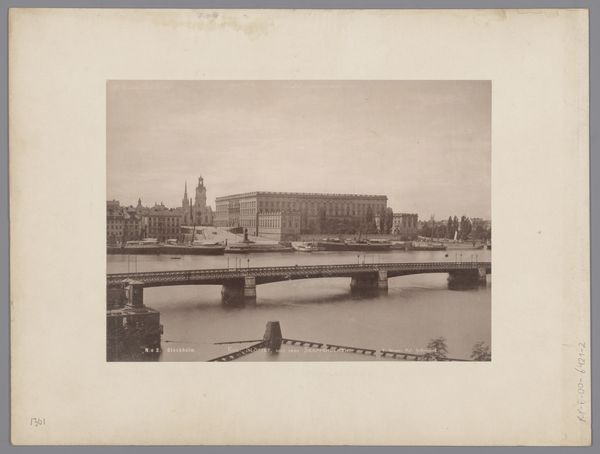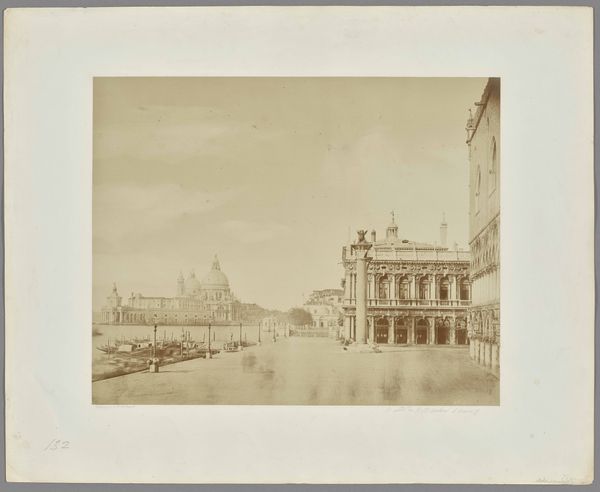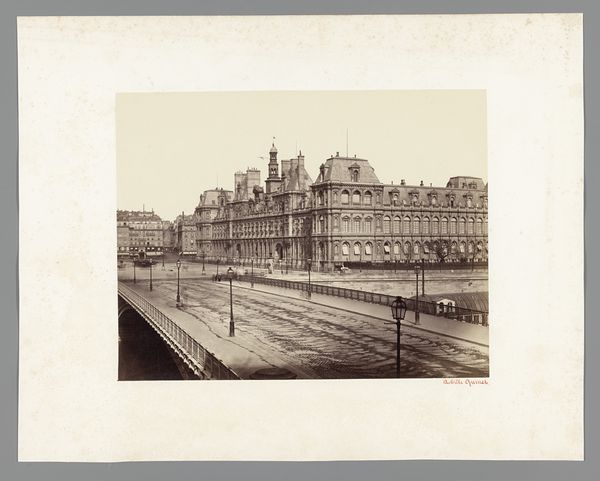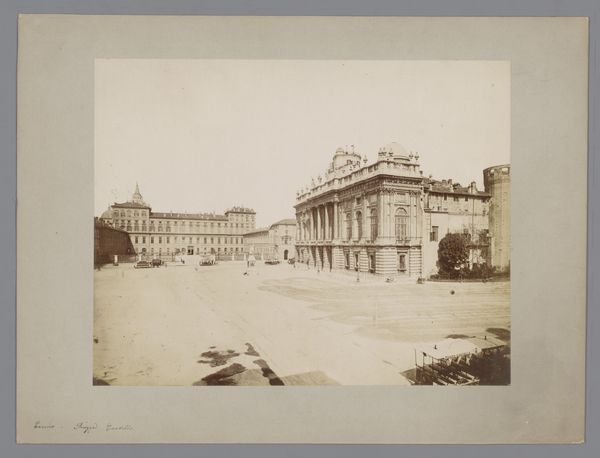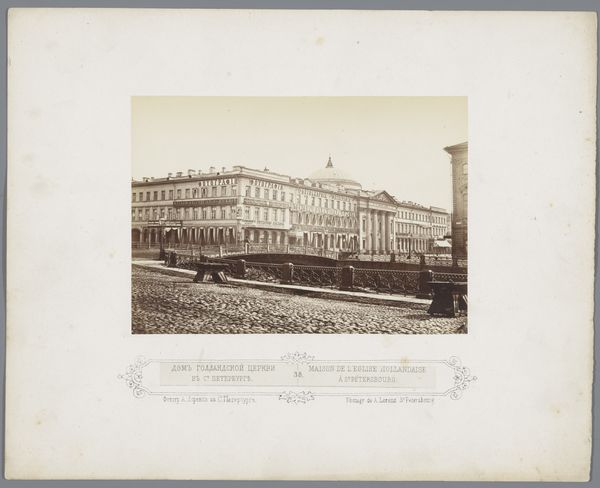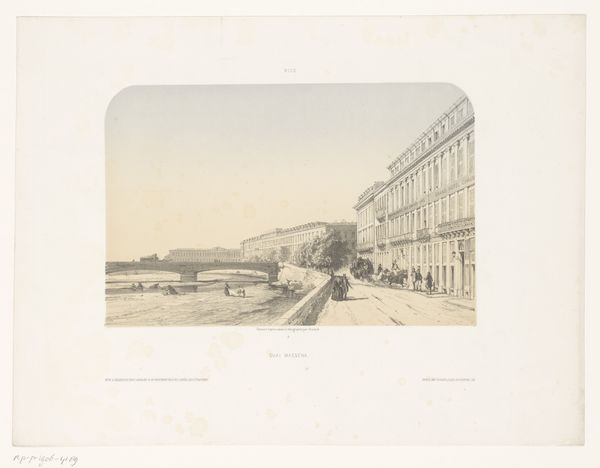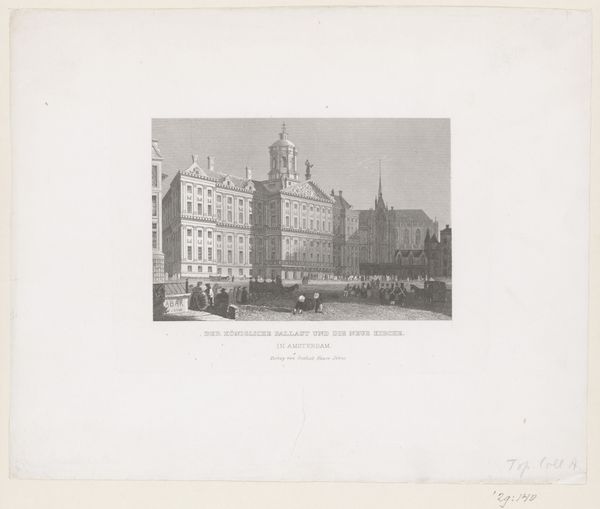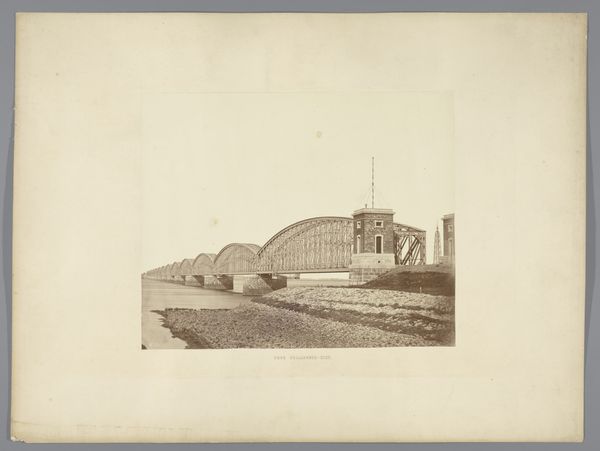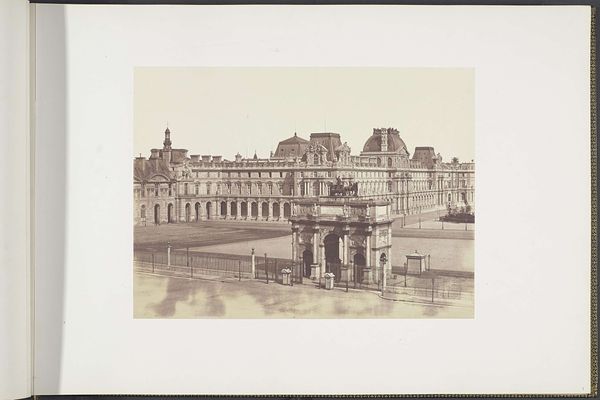
Panorama van het Nieuwe Louvre: cour Napoléon gezien vanaf de Tuilerieën c. 1857
0:00
0:00
daguerreotype, photography
#
neoclacissism
#
landscape
#
daguerreotype
#
photography
#
cityscape
Dimensions: height 378 mm, width 556 mm
Copyright: Rijks Museum: Open Domain
Curator: This is Édouard Baldus' "Panorama van het Nieuwe Louvre: cour Napoléon gezien vanaf de Tuilerieën," a daguerreotype from around 1857. Editor: My first thought is how eerily deserted it feels. It's almost as if some unseen event cleared the courtyard—a powerful feeling of being caught between eras. Curator: Notice how Baldus meticulously captures the Louvre's architecture; each facade segment adheres to the strict Neoclassical order, offering viewers a hyper-realistic urban space predicated on rational organization. Editor: Absolutely. Yet I can’t ignore that Paris wasn’t an empty stage at the time. Think about the context: the Second Empire, Haussmann’s grand boulevards displacing entire neighborhoods, creating that very ordered appearance. This isn't just a cityscape; it's a symbol of power dynamics. Curator: It’s essential to focus on how Baldus uses the then-innovative daguerreotype to create clarity. The contrast between light and shadow emphasizes the linear patterns in the arcades and the placement of the fountains, and all the minute details highlight the visual impact. Editor: And how does photography itself shape what we see? The long exposure makes moving things disappear, literally erasing daily life and implying a false permanence. The people reduced to blurry figures—it shows how new urban policies neglected them, despite this "progress." Curator: It’s a document of formal composition. Note the symmetrical arrangement, emphasizing the central axis and the mirroring effects in the fountain basins. Baldus is employing perspective techniques from classical painting and is using a brand-new medium. Editor: Indeed, considering these advances—while the aesthetics echo the ideals of the ruling class. That vista was constructed for social control as much as beauty, a statement that omits alternative realities. Curator: These explorations in technique combined with symmetrical order certainly grant the photo its authority and architectural strength. I trust our listeners will also find this early work rewarding. Editor: Exactly. I believe it's essential for us to investigate what the "progress" narratives don't reveal: which individuals and groups paid for such spectacular images. That makes a valuable exploration.
Comments
No comments
Be the first to comment and join the conversation on the ultimate creative platform.
